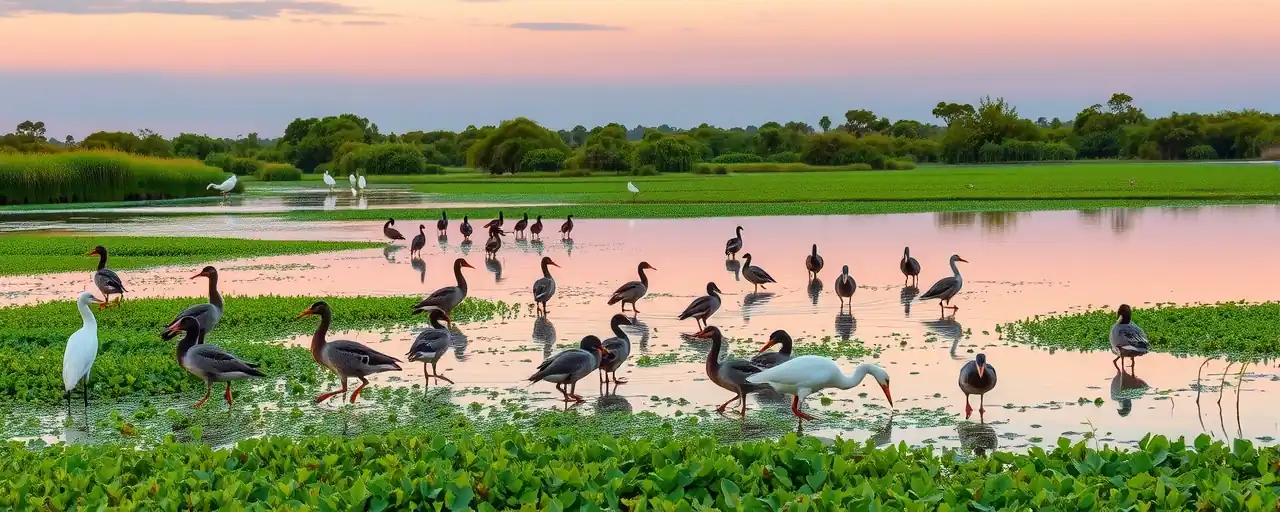Hope Rises at the Salton Sea
California’s Salton Sea, once a vibrant lake, has struggled with shrinking waters and rising salinity, threatening wildlife and fouling the air for nearby residents. A new chapter began recently when the state filled the East Pond Expansion, a cornerstone of the Species Conservation Habitat Project. This effort aims to restore lost ecosystems and reduce dust, bringing relief to communities and nature alike.
The project, initially planned for 4,100 acres, has expanded to over 9,000 acres with federal and state support. By building ponds, berms, and nesting islands, it seeks to revive habitats for fish and birds while covering exposed lakebed to limit harmful dust. For the Imperial and Coachella Valleys, this work promises cleaner air and a healthier future.
The Stakes for People and Wildlife
Reduced water inflows, worsened by drought and diversions, have caused the Salton Sea to shrink, exposing a lakebed that releases fine dust. This contributes to serious health issues in the Imperial Valley, where respiratory illnesses are up to 50 percent more common than the state average. Rising salinity has also harmed fish populations, disrupting food sources for birds migrating along the Pacific Flyway.
The Species Conservation Habitat Project tackles these challenges head-on. Filling areas like the East Pond Expansion creates wetlands that support biodiversity and suppress dust. State leaders note that these efforts not only protect wildlife but also enhance public health, create recreational spaces, and improve living conditions for local residents.
Weighing Different Views
State and federal agencies champion the project, citing its benefits for ecosystems and communities. With $245 million in federal funds and bipartisan bond support, they argue it transforms the Salton Sea into a regional asset. California Natural Resources Secretary Wade Crowfoot emphasizes that partnerships have driven this progress, benefiting both people and wildlife.
Others raise concerns about the project’s cost and scope. Advocates for fiscal restraint suggest that private-sector solutions, such as voluntary conservation partnerships, could achieve similar outcomes with less public spending. They also prioritize economic growth, including energy development, and question the long-term viability of large-scale restoration. These discussions highlight the challenge of aligning environmental goals with financial realities.
Learning From Global Efforts
The Salton Sea project fits into a broader global push for ecosystem restoration. Successes like China’s Loess Plateau, which restored millions of hectares, and the Elwha River dam removals in Washington demonstrate the power of collective action. Yet, challenges like inconsistent funding and complex monitoring persist. The Salton Sea benefits from community involvement and federal grants but must navigate long-term ecological uncertainties.
Climate change is shrinking inland lakes worldwide. Lake Chad has lost 90 percent of its area since the 1960s, and the Aral Sea is nearly gone. These losses threaten biodiversity and water security, making the Salton Sea’s restoration a critical test case for addressing global environmental challenges.
Building a Sustainable Future
With 2,000 acres now active and more in development, the Species Conservation Habitat Project shows real promise. Sustaining this momentum demands continued collaboration among state, federal, tribal, and local partners. Voices from communities hit hardest by poor air quality, often marginalized groups, must shape the project’s direction to ensure equitable outcomes.
The initiative also aligns with California’s green energy goals. Plans to make the Salton Sea region a hub for battery production tie conservation to economic growth, creating jobs in renewable energy. This approach could serve as a blueprint for balancing environmental and economic priorities.
The Salton Sea’s revival offers a vision of resilience. As restoration continues, it could become a beacon of hope, showing how ecosystems and communities can recover when dedication meets opportunity.
